Topic scoreboard examples: Discover the world of scoreboard examples, where strategic design meets performance measurement, offering insights for businesses, education, and technology to track and enhance achievements effectively.
Table of Content
- What are some examples of scoreboards?
- Understanding the Basics of Scoreboards
- Types of Scoreboards
- 4DX Scoreboard: Case Studies and Examples
- Designing a Compelling Scoreboard
- Financial Perspective in Scoreboards
- Customer Perspective: Enhancing Satisfaction
- YOUTUBE: Scoreboard Example
- Internal Process Perspective
- Learning and Growth Perspective
- Practical Examples of Balanced Scorecards
- Employee Performance Scorecards
- Classroom Scoreboard Applications
- Technical Aspects: Creating Scoreboards in Technology
- Templates and Tools for Scoreboard Creation
What are some examples of scoreboards?
Here are some examples of scoreboards:
- Pinterest: On Pinterest, there are multiple boards dedicated to scoreboards. One example is San Juana Ortega\'s board which contains various scoreboard ideas. Another example is Peirce123\'s board which focuses on 4DX Scoreboards and wildly important goals.
- Motivational Scoreboards: A properly designed scoreboard can motivate people to win by keeping track of their progress and achievements. When people are aware of their current scores, they are more likely to engage in competitive play.
Please note that the examples mentioned here are based on the search results and may not reflect the entire range of scoreboards available.
READ MORE:
Understanding the Basics of Scoreboards
Scoreboards are pivotal tools in tracking and measuring performance across various domains, from business to education. They offer a visual representation of key performance indicators (KPIs), helping teams and individuals align their efforts with overarching goals.
- A scoreboard\"s fundamental purpose is to motivate and engage by making progress visible. Whether it\"s a team of employees or a classroom of students, scoreboards offer a clear view of where things stand, fostering a sense of competition and achievement.
- In a business context, scoreboards often take the form of balanced scorecards. These encompass multiple perspectives like financial, customer, internal business processes, and learning and growth, allowing for a holistic view of an organization\"s health and progress.
- Designing a scoreboard is a participatory process. It\"s beneficial when team members contribute to its creation, as this enhances engagement and ownership of the goals and objectives it displays.
- Updating a scoreboard regularly is crucial. This could range from daily updates in a classroom setting to weekly updates in a corporate environment. Regular updates keep the scoreboard relevant and maintain engagement.
- The format of scoreboards can vary widely, from digital dashboards to physical boards. The choice depends on the context and needs, such as the need for remote access or space constraints.
- In technical fields like software development, scoreboards might track complex processes and outcomes, requiring sophisticated tools and systems for accurate representation and analysis.
Ultimately, the effectiveness of a scoreboard hinges on its ability to clearly communicate goals, progress, and achievements, thereby aligning individual or team efforts with strategic objectives.

Types of Scoreboards
Scoreboards vary significantly across different fields and purposes, each type designed to meet specific needs and objectives.
- 4DX Scoreboards: These scoreboards are used in business environments, focusing on key metrics like Wildly Important Goals (WIGs), lag and lead measures. They are simple, visually clear, and easily interpretable, showing whether a team is achieving its goals at a glance.
- Balanced Scoreboards: Widely used in corporate settings, they encompass four perspectives: financial, customer, internal business processes, and learning and growth. This type is customizable to align with a company\"s unique strategy, allowing for tracking of both financial and non-financial measures.
- Employee Scorecards: These are used for monitoring employee performance, aligning personal goals with company strategy. They can be in various formats like digital or print, and may include a ranking system based on performance, development, and values.
- Educational Scoreboards: Used in academic settings, these scoreboards track students\" progress and achievements. They can be updated regularly, sometimes even daily, and can be made engaging with themes and regular recognition of achievements.
- Industry-Specific Scoreboards: For instance, in the banking industry, scoreboards might track KPIs like loan processing times or error rates, while software companies might use them to gauge progress towards specific software development goals.
- UVM Scoreboards: In technology and engineering, scoreboards like UVM (Universal Verification Methodology) are used to verify the correctness of a design, comparing actual outputs with expected values.
Each type of scoreboard is tailored to the specific needs of its context, whether it\"s tracking sales in a business, student performance in a classroom, or project milestones in technology and engineering.
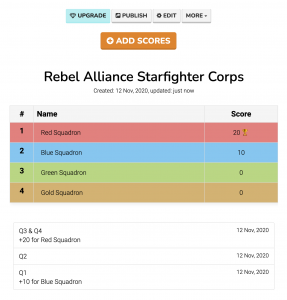
4DX Scoreboard: Case Studies and Examples
The 4DX (Four Disciplines of Execution) Scoreboard is an effective tool for managing and tracking progress towards key goals in various organizational settings. Here are some examples and case studies illustrating its use and impact:
- Business Team Performance: One case study involves a book production department where each team member\"s weekly tasks, like the number of files renamed, were recorded on the scoreboard. This helped the team visually track their progress against their goals, leading to increased accountability and performance.
- Engagement through Visibility: The 4DX Scoreboard\"s effectiveness is heightened by its simplicity and visibility. A well-designed scoreboard, which is simple to understand and clearly shows lead and lag measures, can significantly boost team engagement and performance.
- Creation and Maintenance: Involving team members in the creation of the scoreboard can increase their engagement with the tool. Regular updates, at least on a weekly basis, are crucial for keeping the scoreboard relevant and effective.
- Customizable Formats: Scoreboards can be made using various materials and formats, like poster boards or digital displays, allowing for flexibility based on the team’s needs and resources.
- Impact on Team Dynamics: Implementing a 4DX Scoreboard can lead to a higher level of team commitment to goals, as team members clearly understand whether they are winning or losing in their pursuits.
These examples underscore the 4DX Scoreboard\"s value in fostering a culture of accountability and clarity in goal-setting and achievement. The scoreboard serves as a dynamic tool that can be adapted to various organizational contexts, driving performance and engagement.

Designing a Compelling Scoreboard
Creating an engaging and effective scoreboard requires a thoughtful approach that balances simplicity, visibility, and relevance. Here are key steps and tips for designing a scoreboard that resonates with its intended audience:
- Define Clear Objectives: Start by identifying what the scoreboard will track. This could be sales figures, project milestones, or educational achievements. Ensure these objectives are aligned with the overarching goals of your organization or team.
- Simplicity is Key: An effective scoreboard should be easy to understand at a glance. Avoid overcomplicating it with too much information. Use simple graphics like bar graphs or trend lines to represent data clearly.
- Make it Visually Engaging: Use design elements that reflect your organization\"s identity. This could include team logos, brand colors, or even themes that resonate with your audience. Visual appeal can significantly enhance engagement.
- Regular Updates: Keep the scoreboard updated regularly to maintain its relevance. Depending on your context, this could be as frequent as daily updates or as needed for certain projects.
- Interactive Elements: If possible, incorporate interactive elements like buttons for score updates, especially in digital scoreboards. This not only adds a dynamic aspect but also allows for real-time data representation.
- Data Integration: For more complex scoreboards, like those used in business settings, integrating data connections can be crucial. This ensures that the data displayed is accurate and up-to-date.
- User-Centric Design: Design the scoreboard with the end-user in mind. Whether it\"s for a sports team, a classroom, or a corporate department, the design should be intuitive and user-friendly.
Remember, the goal of a scoreboard is not just to display data, but to motivate and inform its audience effectively. Hence, the design should be tailored to meet these needs while being aesthetically pleasing and easy to interpret.
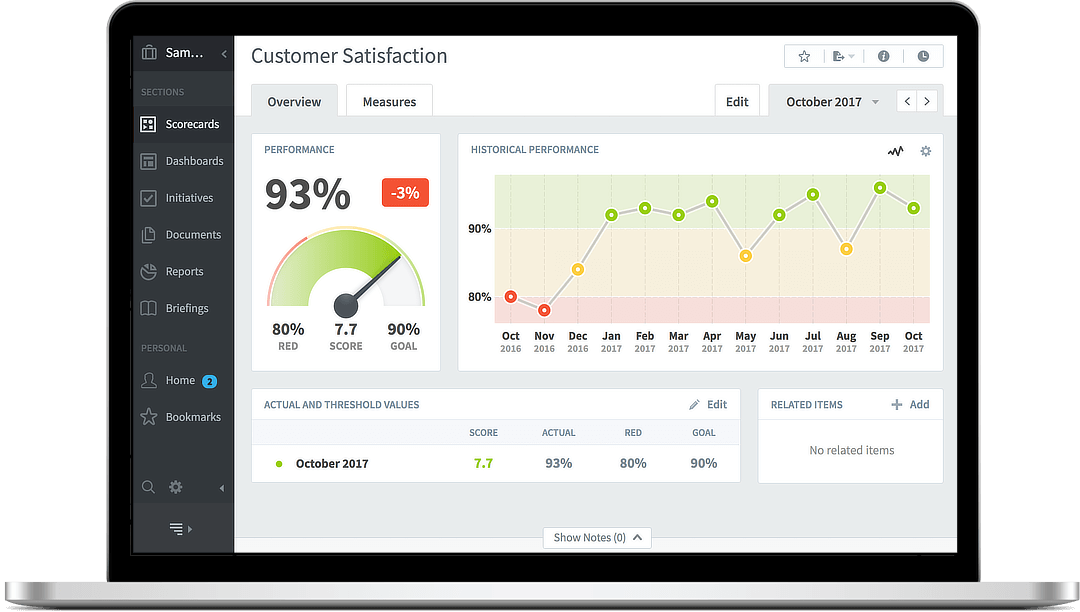
_HOOK_
Financial Perspective in Scoreboards
The financial perspective in scoreboards is a critical aspect of performance management systems, like the Balanced Scorecard, which aligns a company\"s strategic objectives with its financial goals. This perspective focuses on how a company\"s strategies and actions impact its financial health and performance.
- Monitoring Financial Performance: This perspective typically includes tracking key financial metrics such as revenue growth, profit margins, return on investment, and cost management. It helps in assessing whether the company\"s strategy is leading to financial success.
- Shareholder Satisfaction: It emphasizes ensuring that shareholders receive a suitable return on their investment, thus playing a crucial role in the growth and sustainability of the company.
- Strategic Alignment: The financial perspective guides companies in aligning their strategic plans with financial objectives. It involves setting financial targets in line with the company\"s mission and vision.
- Performance Indicators: Key performance indicators (KPIs) under this perspective might include net profit, earnings before interest and taxes (EBIT), revenue growth rate, and operational cost efficiency.
- Decision Making: By providing a clear view of financial outcomes, this perspective aids management in making informed decisions, adjusting strategies, and improving overall financial performance.
- Reporting and Transparency: A well-structured financial perspective on scoreboards ensures enhanced reporting capabilities, offering transparency both internally and externally.
Overall, the financial perspective in scoreboards serves as a fundamental tool for companies to monitor and analyze their financial health, guiding strategic decision-making and long-term sustainability.
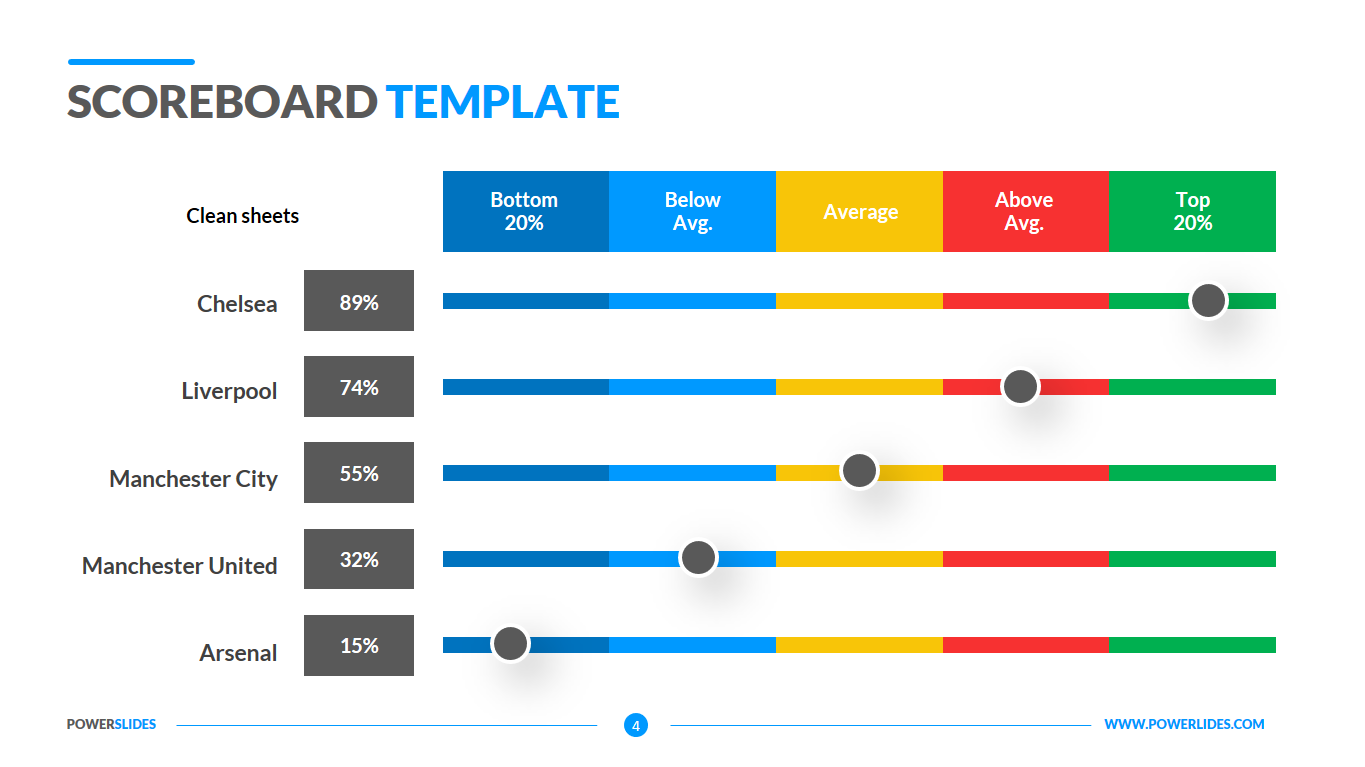
Customer Perspective: Enhancing Satisfaction
The customer perspective in scoreboards focuses on understanding and improving customer satisfaction and loyalty. This perspective is integral to the balanced scorecard framework, aiding businesses in aligning their strategies to enhance customer experiences.
- Understanding Customer Needs: This aspect involves identifying and understanding the needs and desires of customers. It\"s about assessing how customers perceive the company\"s products or services and what they value the most.
- Measuring Satisfaction: Companies can use various metrics such as Net Promoter Score (NPS), customer satisfaction scores, and feedback surveys to gauge customer satisfaction levels.
- Improving Product and Service Quality: Based on customer feedback and satisfaction data, businesses can fine-tune their products and services to better meet customer expectations and resolve any issues identified.
- Customer Retention Efforts: Scoreboards can track customer retention rates, helping businesses to identify strategies to keep their customers engaged and loyal over time.
- Competitor Analysis: Understanding the competitive landscape, including how competitors are meeting customer needs, can provide insights into areas of improvement and innovation.
- Customized Strategies: The scoreboard should reflect strategies tailored to target market segments, ensuring that the value propositions are well-aligned with customer expectations.
Effectively managing the customer perspective in scoreboards requires an ongoing commitment to listening to customer feedback, adapting to changing needs, and continually striving for excellence in customer service.

Scoreboard Example
Examples - Looking for inspiration and practical tips in action? Look no further! Our video is filled with real-life examples that will spark your creativity and help you master new skills. From jaw-dropping art to mind-blowing engineering marvels, prepare to be amazed by the limitless possibilities showcased in this captivating video!
Scoreboard Example
Examples - Looking for inspiration and practical tips in action? Look no further! Our video is filled with real-life examples that will spark your creativity and help you master new skills. From jaw-dropping art to mind-blowing engineering marvels, prepare to be amazed by the limitless possibilities showcased in this captivating video!
Internal Process Perspective
The internal process perspective of a scoreboard focuses on analyzing and optimizing the operational aspects of an organization. This perspective is crucial for identifying areas for improvement in business processes, ensuring efficiency, and enhancing overall performance.
- Operational Efficiency: This involves evaluating how effectively the company\"s internal processes operate. Metrics such as production time, error rates, and process costs are commonly used to assess operational efficiency.
- Quality Control: Ensuring product or service quality is a key aspect of internal processes. Scoreboards might track defect rates, inspection results, and compliance with quality standards.
- Process Improvement: By analyzing current processes, companies can identify bottlenecks or inefficiencies and implement strategies to overcome these challenges.
- Resource Management: Effective use of resources, including human resources, materials, and equipment, is vital. The scoreboard can help monitor resource allocation and utilization.
- Innovation and Development: Tracking the progress of new projects or initiatives, and their contribution to the company\"s growth is also part of this perspective.
- Customer Fulfillment: Internal processes should align with customer satisfaction goals. This includes tracking the speed and accuracy of order fulfillment and response times to customer inquiries.
Overall, the internal process perspective in scoreboards is instrumental in driving continuous improvement and operational excellence within organizations.
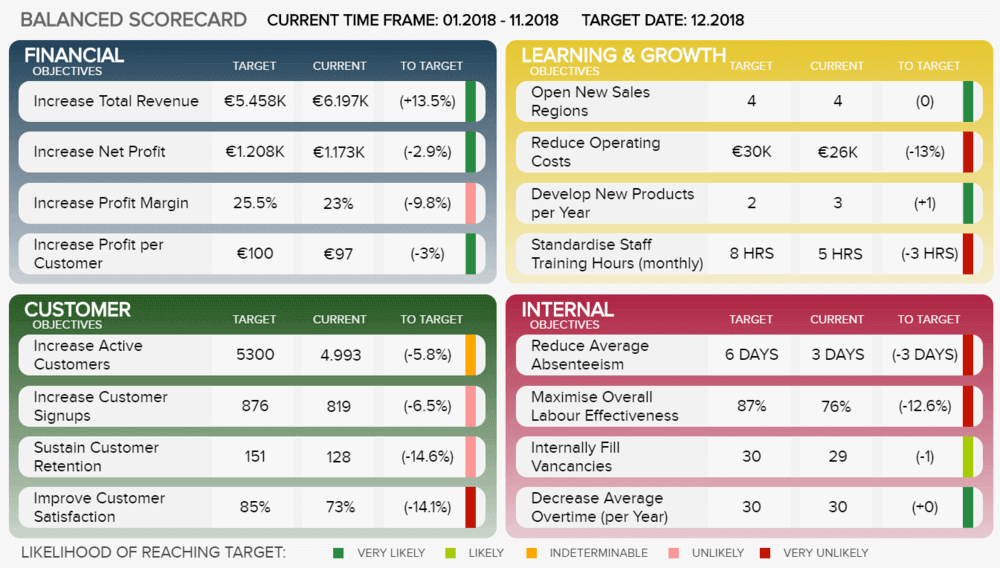
Learning and Growth Perspective
The learning and growth perspective in scoreboards focuses on the development and empowerment of employees as a key factor in achieving organizational success. This perspective emphasizes nurturing human capital, fostering a culture of continuous learning, and ensuring that employees have the necessary resources and skills to meet organizational goals.
- Employee Training and Development: Metrics may include hours of training per employee, number of completed training sessions, and the impact of training on performance.
- Knowledge Management: This involves the creation, sharing, and application of knowledge within the organization. It can be measured by tracking initiatives like mentoring programs or knowledge-sharing platforms.
- Employee Satisfaction and Retention: Scoreboards often monitor employee satisfaction levels through surveys and track retention rates to gauge the organizational climate and culture.
- Innovative Capacity: The ability to innovate and adapt is crucial. This can be measured by the number of new ideas implemented, patents filed, or successful projects completed.
- Leadership Development: Developing future leaders is critical for long-term success. Metrics could include the number of employees enrolled in leadership programs and the effectiveness of these programs.
- Technology Utilization: With the growing importance of technology, tracking the adoption and effective use of new technologies within the organization becomes vital.
Overall, the learning and growth perspective of a scoreboard ensures that the workforce is equipped, knowledgeable, and motivated, which is essential for sustainable organizational growth and adaptation in a changing business environment.
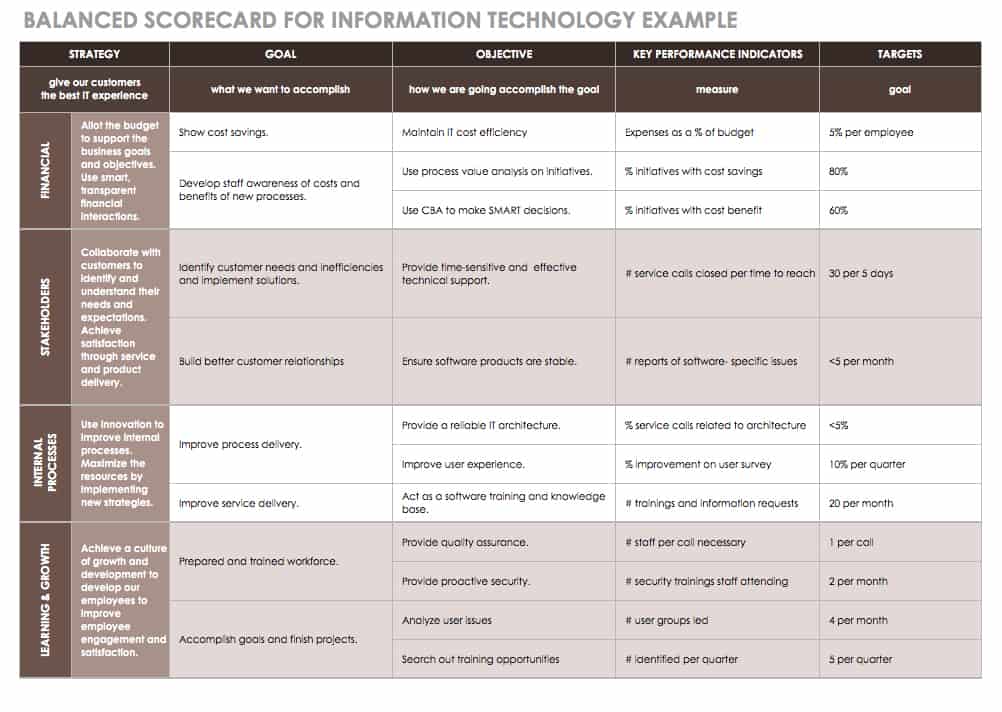
Practical Examples of Balanced Scorecards
The Balanced Scorecard (BSC) is a strategic planning and management tool used to align business activities with the vision and strategy of an organization. It focuses on four key perspectives: Financial, Customer, Internal Process, and Learning and Growth. Below, we delve into practical examples of Balanced Scorecards across various industries and sectors.
Restaurant Balanced Scorecard
- Objectives: Focusing on customer satisfaction, efficient service, and profitability.
- KPIs: Average customer wait time, revenue per table, and customer feedback scores.
- Targets: Improve customer satisfaction by 10%, increase revenue per table by 5%.
- Initiatives: Staff training programs, menu optimization.
Healthcare Balanced Scorecard
- Objectives: Enhancing patient care, reducing operational costs, improving staff efficiency.
- KPIs: Patient recovery rates, operational costs, employee turnover rates.
- Targets: Increase patient recovery rates by 15%, reduce operational costs by 10%.
- Initiatives: Implementing new healthcare technologies, staff development programs.
Information Technology Balanced Scorecard
- Objectives: Aligning IT services with business needs, optimizing costs, improving service delivery.
- KPIs: IT service downtime, cost per IT service, user satisfaction ratings.
- Targets: Reduce IT service downtime by 20%, decrease costs by 10%.
- Initiatives: Upgrading IT infrastructure, implementing customer feedback mechanisms.
Financial Perspective in Scoreboards
This perspective focuses on financial outcomes and how they relate to the organization\"s strategy. Key aspects include profitability, cost management, and revenue growth.
Customer Perspective: Enhancing Satisfaction
Under this perspective, scoreboards track customer satisfaction, market share, and customer loyalty, aiming to understand and improve the customer experience.
Internal Process Perspective
This involves measuring and improving internal business processes to ensure efficient and quality output, focusing on process optimization and innovation.
Learning and Growth Perspective
This area emphasizes employee development and organizational learning, looking at staff training, knowledge management, and workplace culture.
Developing a Balanced Scorecard
- Define Purpose: Identify the business unit and desired achievements with the BSC.
- Interview Senior Managers: Gather insights on strategic goals and performance measures.
- Manager Workshops: Discuss mission, strategy, and draft BSC to develop action plans.
- Initiate Action Plan: Based on the BSC, create and communicate an implementation plan.
- Review and Update: Regularly review and update the BSC to reflect changes and improvements.
Implementing a Balanced Scorecard effectively requires a holistic view of the organization, considering all key perspectives to ensure a comprehensive strategy that drives towards the organization\"s vision and goals.

_HOOK_
Employee Performance Scorecards
An employee performance scorecard is a powerful tool for monitoring and enhancing employee productivity. It\"s a structured approach that helps align an individual\"s performance with the organization\"s strategic goals.
Key Elements of an Employee Performance Scorecard
- Objectives: Specific goals each employee aims to achieve.
- Performance Indicators: Metrics to measure progress towards objectives.
- Development Indicators: Aspects focusing on employee growth and skill development.
- Values: Core values and behavior expectations within the organization.
Strategic Perspectives in Scorecards
- Financial: Metrics related to revenue growth, return on investment, etc.
- Customer: Focuses on customer satisfaction, loyalty, and brand awareness.
- Internal: Evaluates the efficiency of internal processes.
- Learning and Growth: Concentrates on employee training, knowledge, and retention.
Creating an Employee Performance Scorecard
- Interview Employees: Understand their perspective on company goals and performance.
- Define Strategic Goals: Align goals with company values and objectives.
- Incorporate a Strategic Map: Include financial, customer, internal, and learning perspectives.
- Choose Metrics: Select appropriate measures for each division of the organization.
- Pick a Format: Decide between digital (e.g., PDF, Excel) or print formats for the scorecard.
- Implement a Ranking System: Optional but can include performance, development, and values.
- Devise an Action Plan: Outline steps to achieve strategic goals.
- Execute and Evaluate: Implement strategies and continuously review progress.
Employee performance scorecards are essential for fostering a culture of continuous improvement and alignment with organizational goals. They help in identifying areas of strength and opportunities for growth, both at an individual and company level.
Classroom Scoreboard Applications
Classroom scoreboards are effective tools for enhancing student engagement and fostering positive behavior. They offer a fun and interactive way to motivate students beyond academic performance, focusing on values like respect, responsibility, and teamwork. Creating a successful scoreboard involves several key steps:
Establishing the Scoreboard Criteria
- Determine Scoring Criteria: Decide on clear, measurable, and observable activities for awarding points, such as punctuality or participation.
- Choose Between Individual or Team Tracking: Decide if points will be awarded to individual students or teams, based on the desired outcomes.
- Set the Duration: Determine whether the scoreboard will be for a one-off competition or an ongoing activity.
- Plan Rewards and Recognition: Establish regular intervals for updating the scoreboard and recognizing achievements.
Tools and Methods for Scoreboard Creation
- Online Tools: Websites like Keepthescore.com offer customizable digital scoreboards suitable for classroom use.
- Notecards: Placing notecards on students\" desks to manually track points.
- Pre-made Templates: Utilize ready-made templates available on educational resource websites.
- Powerpoint/Google Sheets: Familiar digital platforms for creating and managing scoreboards, especially useful in remote teaching scenarios.
Implementing a classroom scoreboard can significantly contribute to a dynamic and engaging learning environment. By involving students in the creation process and regularly updating and celebrating their achievements, teachers can foster a positive and collaborative classroom culture.
Technical Aspects: Creating Scoreboards in Technology
The creation of scoreboards in technology encompasses a variety of approaches and techniques, each suited to specific needs and environments. This section provides an overview of creating dynamic scoreboards using web technologies like React, as well as specialized tools in environments like UVM (Universal Verification Methodology).
Dynamic Scoreboards with React
- State Management: In React, state management is a core concept for creating dynamic interfaces. The state holds data that can change over time, triggering UI updates.
- Component Structure: A scoreboard component can be structured using functional components in React. This involves setting up the base component and managing scores and team names within the component\"s state.
- Event Handling: Updating scores is handled through event handlers that modify the state, leading to automatic re-rendering of the component with updated data.
- Styling: CSS is used to style the scoreboard, making it visually appealing and responsive to different device sizes. Styles are applied to different elements like the scoreboard, team displays, and buttons.
Scoreboards in UVM Environments
- UVM Scoreboard Role: In a Universal Verification Methodology (UVM) environment, the scoreboard is essential for verifying the operation of a design at a functional level. It can vary significantly in functionality and complexity based on the specific project requirements.
- Creation and Connection: In UVM, a user-defined scoreboard is created by extending the `uvm_scoreboard`. It involves defining analysis ports and exports for communication with monitors and handling transactions.
- Comparing Output: The primary function of a UVM scoreboard is to compare the output of the Device Under Test (DUT) with expected values or golden reference values. This is achieved by writing appropriate functions within the scoreboard.
- Synchronization and FIFO Usage: Managing multiple transaction streams and ensuring synchronization is a key aspect. UVM FIFOs (First In, First Out queues) can be utilized for this purpose, providing a clean and efficient way to handle data.
Both approaches, whether in web development with React or in a UVM environment, highlight the importance of understanding the underlying framework and its features to effectively create and manage scoreboards. The technical aspects of scoreboard creation require a thorough understanding of state management, UI rendering, and event handling in React, while UVM scoreboards necessitate a deep knowledge of UVM components, transaction handling, and synchronization mechanisms.
READ MORE:
Templates and Tools for Scoreboard Creation
Creating a scoreboard for your organization involves various strategic components. Utilizing templates and tools can simplify this process and ensure alignment with your business goals. Here\"s a guide to some effective approaches and resources for scoreboard creation.
Understanding Balanced Scorecard (BSC) Templates
Balanced Scorecards are widely used for strategic planning and performance management. They align your company\"s strategy with operational objectives, focusing on four key perspectives: financial, customer, internal processes, and learning and growth.
- Basic Templates: Templates are available in various formats like Excel and PowerPoint, providing a professional, easy-to-read layout. They allow you to enter objectives, KPIs, targets, and initiatives across different perspectives.
- Customization: These templates offer customization options like modifying fonts, colors, and adding logos to align with your company\"s branding.
- Versatility: Balanced Scorecard templates can be adapted to various business models, from restaurants to healthcare, and information technology departments.
Steps for Developing a Balanced Scorecard
- Develop Your Company Vision: Start with a clear, inspirational vision statement for your company\"s future.
- Determine Strategic Objectives: Identify key goals essential for your business’s current and future well-being. Tools like SWOT analysis can be helpful in this stage.
- Identify Success Factors: Determine the critical success factors (CSFs) necessary for achieving your strategic goals.
- Key Performance Indicators (KPIs): Choose KPIs that align with your strategic objectives. These should be defined in simple terms and linked to your budget.
- Set Targets and Initiatives: Establish specific targets and plans for your BSC. This includes considering baseline KPIs and aiming for realistic targets.
Benefits of Using Balanced Scorecard Templates
- Strategic Planning: BSC templates provide a structured framework for developing and communicating your strategy.
- Enhanced Communication: They help in effectively communicating the strategy internally and externally, engaging employees and stakeholders.
- Improved Information Management: These templates encourage the development of relevant KPIs and enhance performance reporting.
- Strategic Alignment: Scorecards ensure that all departments and divisions are aligned with the company’s high-level strategy.
- Focus on Strategy: Regular reviews of the BSC help in maintaining a focus on the strategic goals and ensuring they are at the center of management activities.
Using balanced scorecard templates and following these steps can significantly enhance the efficiency and effectiveness of your organization\"s strategic planning and performance management processes.
Explore our diverse range of scoreboard examples to elevate your strategic planning and performance management. Tailor these innovative solutions to fit your specific needs and drive your organization towards success.

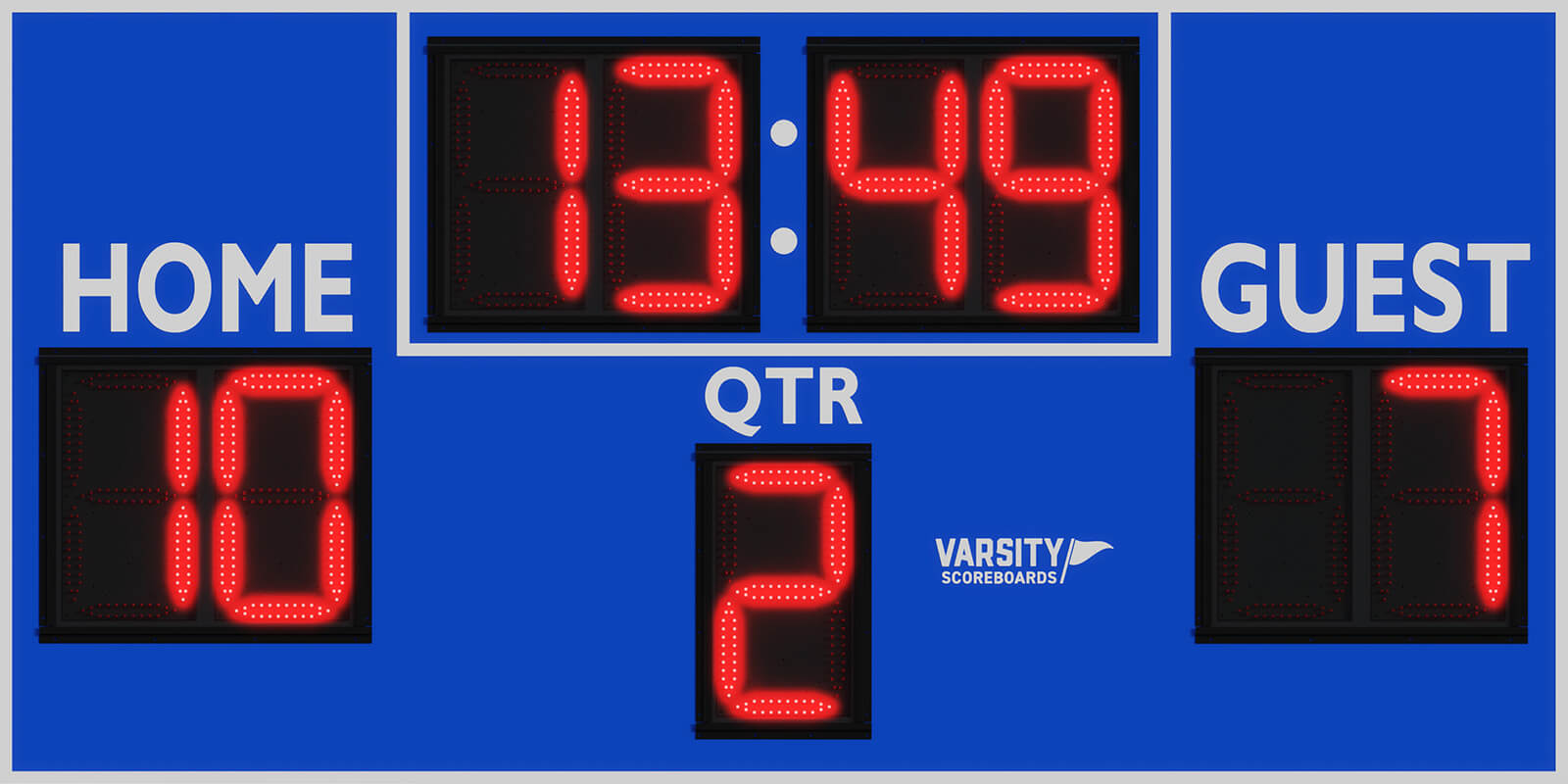

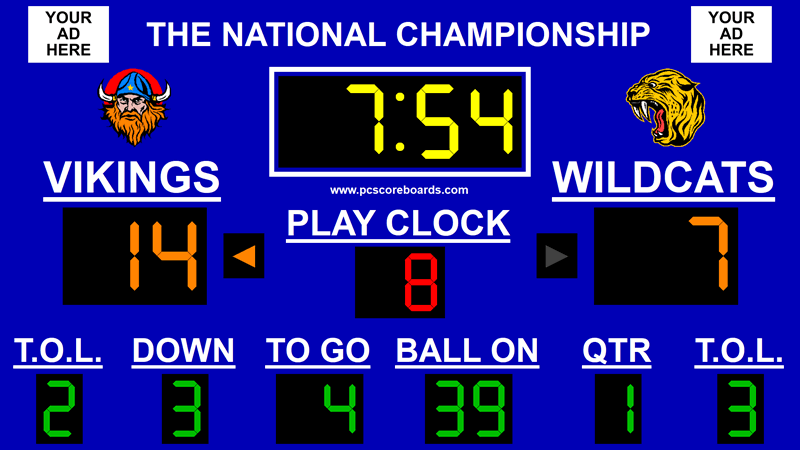


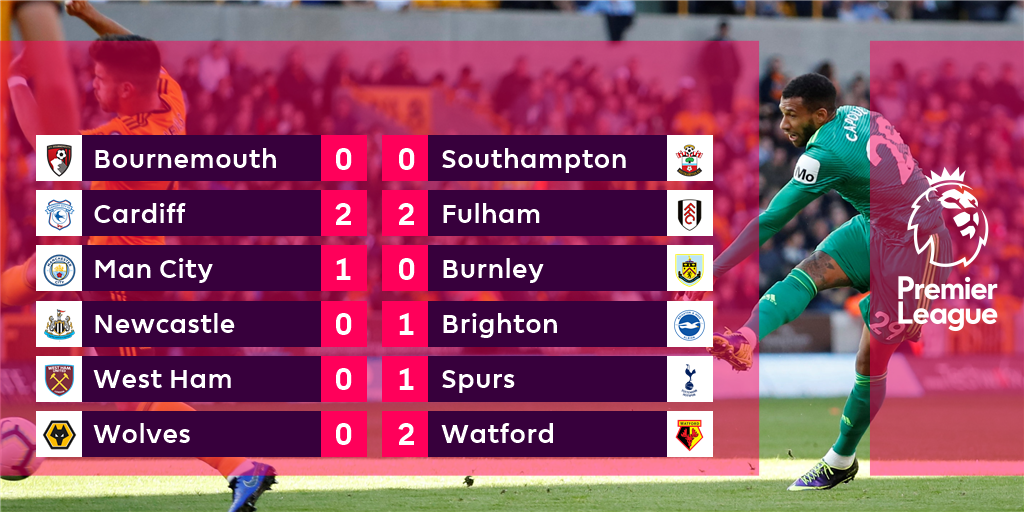








/origin-imgresizer.eurosport.com/2023/09/21/3789745-77084828-2560-1440.jpg)

